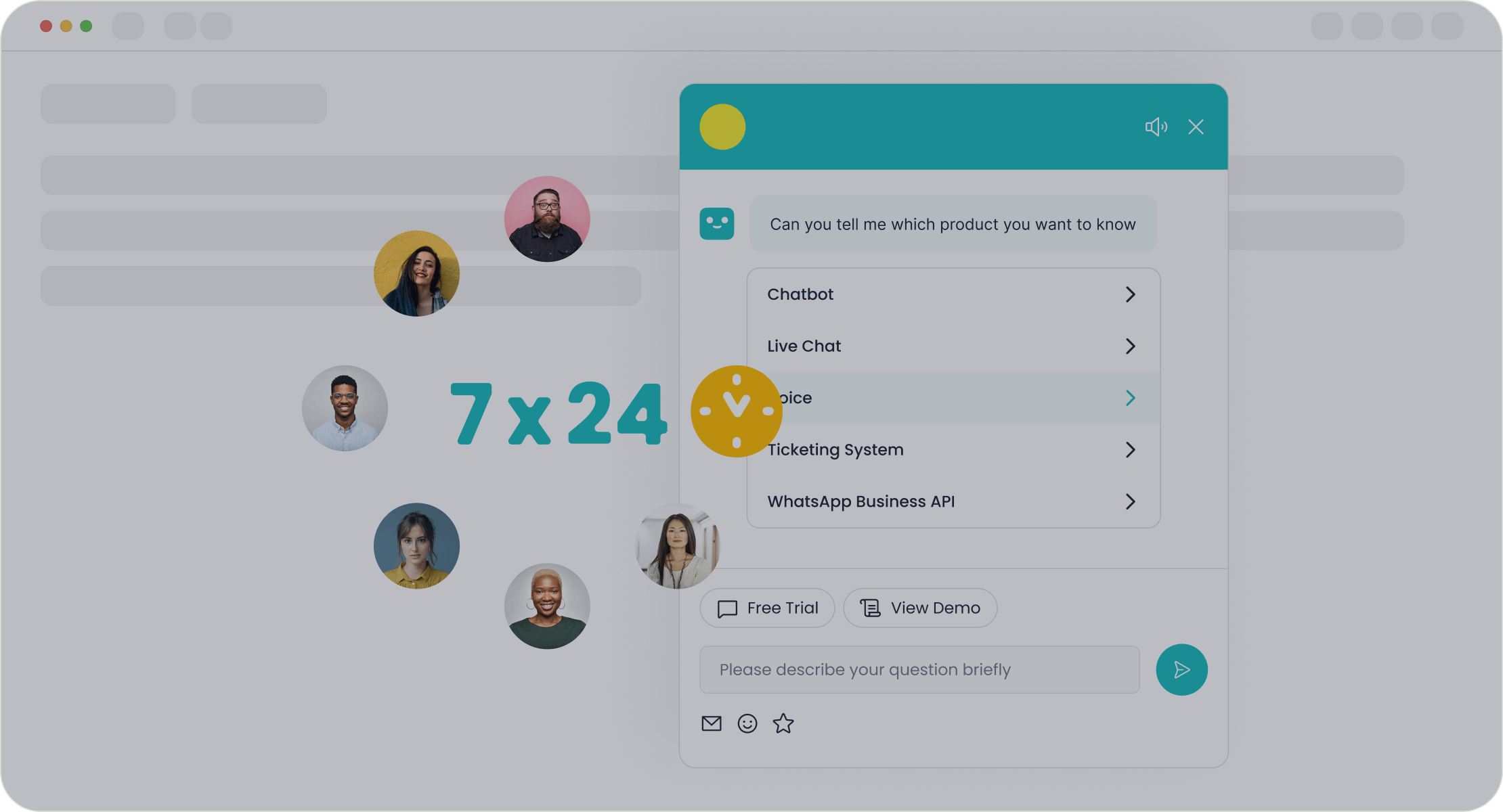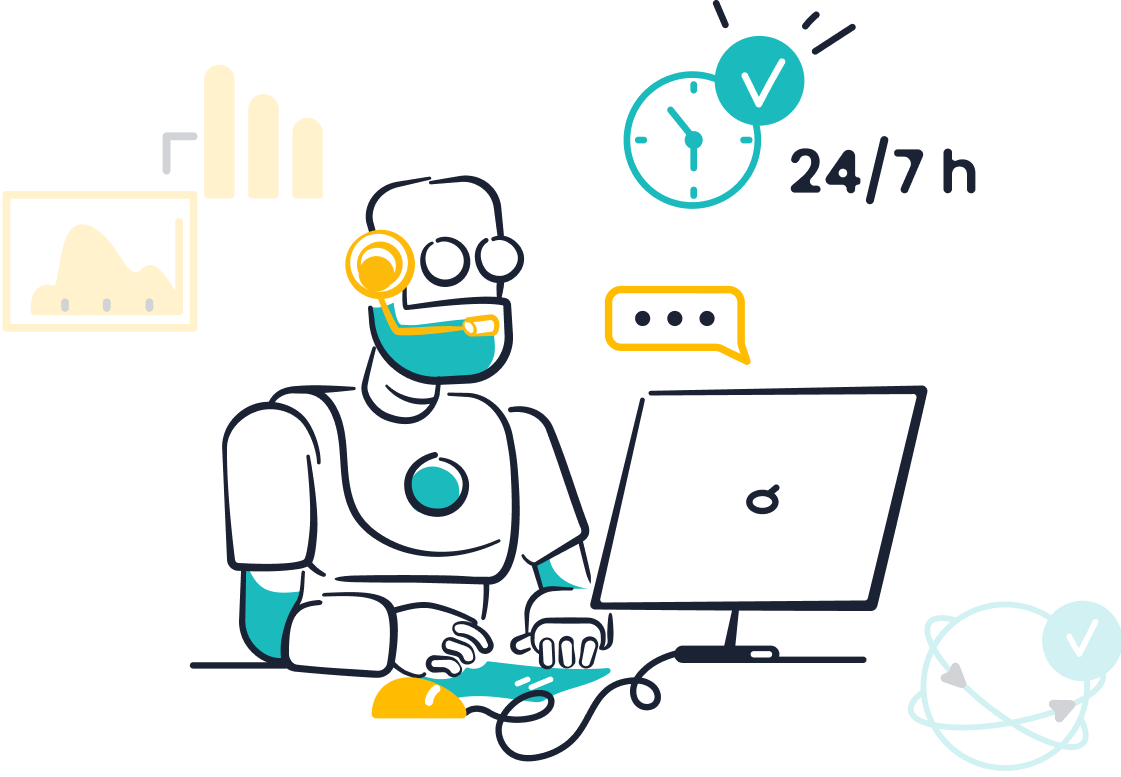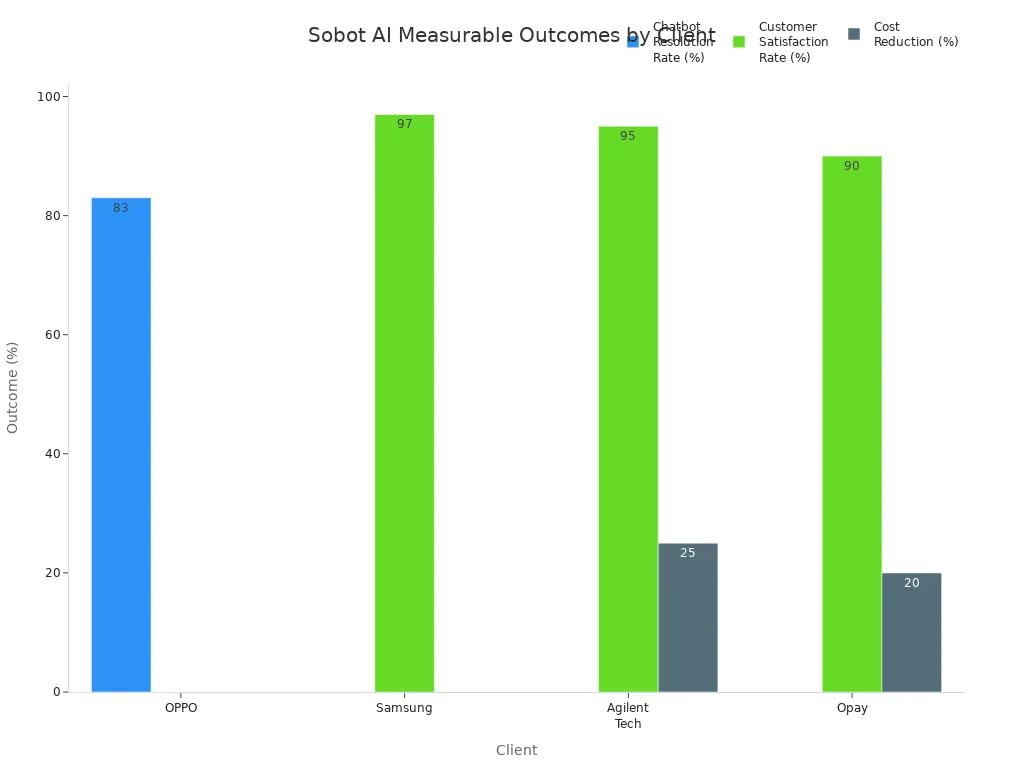How AI Powers Examples of Great Customer Experience in 2025

Technology reshapes customer experience in 2025. AI now handles most customer interactions and improves service speed. Many companies use AI to automate tasks and boost satisfaction. Sobot leads digital transformation by providing tools that reduce service costs and predict customer behavior. Sobot AI powers seamless omnichannel support, helping retailers increase conversion rates. Sobot call center solutions show how digital transformation makes customer service easier, faster, and more personal. Real-world examples of great customer experience reveal how AI chatbots free agents to solve complex problems.
AI and Customer Experience

Sobot’s Role in Digital Transformation
Digital transformation changes how companies deliver customer experience. Sobot leads this change by using ai to create smarter customer experience technology. Sobot’s “AI-First” strategy focuses on five pillars: omnichannel ai, scenario-based ai, multi-faceted ai, generative ai, and secure ai. These pillars help companies connect with customers across websites, apps, social media, email, calls, and SMS. Sobot’s platform integrates communication channels and internal systems, such as CRM and ticketing, into one workspace. This approach makes cx more efficient and consistent. Samsung improved agent efficiency by 30% and reached a 97% customer satisfaction score after using Sobot’s customer experience technology.
Sobot’s digital transformation tools allow agents to handle customer requests from different channels in one interface. Customers get fast, accurate, and personalized support. Sobot’s ai-driven solutions help businesses predict needs, automate tasks, and improve cx.
Key Capabilities of Customer Experience Technology
Customer experience technology uses ai to transform cx. Sobot’s chatbot and omnichannel solutions are foundational. These tools use natural language processing and sentiment analysis to understand customer intent and adapt responses in real time. Integration with CRM and ERP systems gives agents a complete view of each customer. This unified data enables proactive support and tailored recommendations.
- ai agents act as digital concierges, managing complex tasks and saving time for customers.
- Omnichannel strategies unify customer journeys, allowing seamless transitions between chat, email, and social media.
- Personalization is central. 71% of consumers expect personalized interactions, and 76% feel frustrated when it is missing.
- Companies with strong omnichannel strategies retain 89% of customers, while weak strategies retain only 33%.
| Capability | Benefit |
|---|---|
| Omnichannel Support | Seamless, consistent cx across all channels |
| AI Chatbot | 24/7 self-service and instant resolutions |
| Data Analytics | Over 300 indicators for optimization |
| Multi-Product Integration | Unified platform for all customer needs |
Sobot’s customer experience technology sets the stage for digital customer experience success. Businesses using ai technologies and ai-driven solutions see higher satisfaction, loyalty, and efficiency. The next section will show real-world examples of how Sobot’s digital transformation delivers great cx.
Examples of Great Customer Experience
Sobot Chatbot in Retail and E-Commerce

Retail and e-commerce companies face many challenges in delivering exceptional customer service. Sobot’s AI chatbot provides practical solutions that transform customer experience technology. Businesses use the chatbot to automate customer interactions and improve cx across every customer journey stage. The chatbot operates 24/7, handling routine inquiries and freeing agents to focus on complex issues.
- Companies report customer satisfaction improvements of up to 30%. Many see an average increase of 12%.
- Response and resolution times drop by 25-30%, making service faster and more reliable.
- Operational costs decrease by 20-30% because the chatbot automates up to 80% of routine tasks.
- Businesses save thousands of staff hours each month while maintaining customer satisfaction rates above 85%.
- The chatbot provides continuous support, ensuring customer engagement at all times.
- Real-time transaction monitoring helps prevent fraud and protect customers.
- Personalized interactions and intent analysis boost conversion rates and revenue by up to 10%.
Sobot’s AI chatbot helps retailers and e-commerce brands deliver examples of great customer experience. The technology supports omnichannel customer interactions, allowing customers to connect through chat, email, voice, and social media. Companies use these tools to optimize every customer journey touchpoint and build lasting loyalty.
Tip: Retailers using Sobot’s chatbot see measurable improvements in customer engagement, efficiency, and sales. The chatbot’s AI-driven personalization increases conversions and strengthens brand loyalty.
OPPO’s Success Story with Sobot
OPPO, a global leader in smart devices, wanted to improve customer experience during peak shopping periods. The company partnered with Sobot to implement AI-driven customer experience technology. OPPO used Sobot’s chatbot and ticketing system to automate customer support and streamline customer interactions.
OPPO achieved an 83% chatbot resolution rate, meaning most customer inquiries were solved without human intervention. The company saw a 57% increase in repurchase rate, showing stronger customer engagement and loyalty. Sobot’s AI solutions helped OPPO provide seamless, personalized experiences across multiple channels. The integration reduced the workload for human agents and improved operational efficiency.
OPPO’s customer journey became smoother and more efficient. Customers received fast, accurate answers to their questions. The company optimized its knowledge base, reducing maintenance efforts by 90%. OPPO’s management noted higher customer satisfaction and a 94% positive feedback rate. These results show how Sobot’s AI-powered tools deliver examples of great customer experience and drive business growth.
Note: OPPO’s partnership with Sobot demonstrates the power of AI in transforming customer retention and engagement. The company’s success highlights the value of omnichannel AI integration in customer experience technology.
Omnichannel Support and Automation
Omnichannel support and automation play a key role in delivering examples of great customer experience. Sobot’s customer experience technology enables businesses to unify customer interactions across all channels. Companies track key performance indicators (KPIs) to measure the impact of AI and automation on cx.
| KPI Name | Description | How to Use | Recommended Benchmark |
|---|---|---|---|
| First Contact Resolution (FCR) | Measures ability to resolve customer issues in the first interaction, indicating channel and team synchronization. | Track by channel, request type, or team to identify improvement areas. | Aim for >70%, ideally 80% depending on industry. |
| Average Response Time | Measures speed of response across channels (AI, email, phone). Reflects perceived service responsiveness. | Compare response times by channel and align with customer expectations. | <1 min for live chat, <4 hrs social media, <24 hrs email. |
| Net Promoter Score (NPS) by channel | Assesses likelihood of customer recommendation post-interaction, identifying strengths and friction points. | Segment by channel and request type to target improvements. | Above 30 acceptable, above 50 excellent. |
| Channel Transfer Rate | Tracks frequency of customers switching channels to resolve issues, revealing integration gaps. | Identify common transfer journeys and causes; improve channel interoperability. | Keep below 10% of total requests. |
| Self-Service Tool Usage Rate | Measures customer use of FAQs, AI agents, or help centers for independent issue resolution. | Monitor self-resolution rates and popular topics to improve content and navigation. | Aim for 30–50% self-resolution on simple requests. |
| Customer Effort Score (CES) | Measures perceived difficulty in resolving issues; lower scores indicate smoother experiences. | Survey customers post-interaction; compare by channel or journey stage to find friction points. | Aim for average ≤3 on a 1 (easy) to 7 (difficult) scale. |
| Total Volume of Requests Handled | Reflects total inquiries processed across all channels, indicating workload and activity trends. | Track over time to anticipate peaks and adjust staffing/resources accordingly. | Benchmark depends on customer base and service nature. |
KPIs help businesses understand how AI and automation improve customer experience. Companies use these metrics to identify service gaps, optimize customer journey touchpoints, and enhance customer engagement. Sobot’s omnichannel support ensures customers receive consistent, personalized service no matter which channel they choose.
Customer experience technology powered by AI allows businesses to deliver examples of great customer experience. Companies see higher customer satisfaction, increased sales, and stronger brand loyalty. Sobot’s solutions help organizations measure and improve every aspect of cx, making customer interactions more efficient and enjoyable.
Impact of Technology on Customer Experience

Enhancing Satisfaction and Loyalty
The impact of technology on customer experience continues to grow in 2025. Sobot’s customer experience technology uses ai to deliver 24/7 support, proactive messaging, and digital personalization. These features help companies meet rising expectations for instant and seamless cx. Customers now expect brands to respond quickly and offer personalized solutions at every stage of the customer journey. Sobot’s ai-powered chatbots and omnichannel platforms ensure that customer interactions remain consistent and engaging.
- Companies using big data and ai see higher customer satisfaction and loyalty.
- Personalized marketing increases revenue by up to 40%.
- 71% of consumers expect personalization, and 76% feel frustrated when it is missing.
- 85% of customer interactions are managed by ai, making cx more efficient.
- 80% of customers value seamless digital experiences as much as the product itself.
Sobot’s ai solution for retail and e-commerce helps brands retain up to 89% of customers. Businesses that prioritize cx see higher revenue growth and stronger customer loyalty.
Improving Efficiency and Reducing Costs
Sobot’s customer experience technology improves efficiency and reduces costs for businesses. Ai automates routine tasks, allowing human agents to focus on complex issues. Companies measure improvements using key metrics like customer retention, complaint resolution time, and operational costs.
| Metric Category | Measurement Examples | Outcomes |
|---|---|---|
| Revenue Growth | Increase in order value, retention, overall revenue | 37% increase in retention; 20% higher order value |
| Cost Reduction | Lower operational costs, faster complaint resolution | 30% reduction in resolution time; cost savings |
| Efficiency Gains | Shorter sales cycles, faster response times | 30% shorter sales cycle; 25% more sales revenue |
| Customer Lifetime Value | Higher satisfaction, long-term revenue | 25% higher satisfaction; better retention |
Sobot’s ai solution delivers measurable results. For example, OPPO achieved an 83% chatbot resolution rate and a 57% increase in repurchase rates. Samsung reached a 97% customer satisfaction rate using real-time analytics.

Personalization and Real-Time Insights
Personalization and real-time insights shape a better customer experience. Sobot’s ai analyzes customer data to deliver tailored content and recommendations. This approach creates relevant experiences throughout the customer journey.
- 76% of consumers prefer to buy from companies that offer personalization.
- Brands like Shein and Spotify use ai to increase engagement and loyalty.
- Real-time personalization meets customer needs instantly and builds emotional connections.
- Continuous assessment and data-driven insights improve personalization strategies.
Sobot’s customer experience technology uses ai to provide dynamic, personalized support. Businesses gain a competitive edge by offering exceptional customer service and adapting to customer needs in real time. This technology impact leads to higher satisfaction, loyalty, and long-term growth.
Best Practices for Digital Transformation
Balancing AI and Human Touch
Successful digital transformation in customer experience (cx) depends on balancing ai automation with human empathy. Companies empower agents with ai tools like sentiment analysis and predictive analytics to improve efficiency. They automate routine tasks such as ticket routing and use chatbots for self-service, reducing inquiry volume. Mapping the customer journey helps identify which interactions suit ai and which need human agents. Businesses segment support by complexity, letting ai handle simple requests and reserving humans for emotional or nuanced issues. Seamless ai-to-human handoffs ensure customers do not repeat information. Real-time ai assistance suggests answers and next steps, boosting agent performance. Hybrid models combine ai scalability with human empathy, delivering exceptional cx and personalization.
Tip: Design workflows that integrate ai and human agents. Build trust through transparency and continuous feedback.
Ensuring Privacy and Compliance
Digital transformation in cx requires strict attention to privacy and compliance. Companies must follow global and U.S. state privacy laws, including GDPR and CCPA. New regulations focus on cookie classifications, opt-out mechanisms, and purpose limitations for sensitive data. Laws now require opt-in consent for collecting and selling children’s data, ban targeted ads, and restrict geolocation data sales. States like Colorado and Oregon extend privacy rules to more businesses. App stores will soon require age verification, impacting compliance with COPPA. Organizations must ensure transparency in third-party data sharing and maintain strong data governance. Ai-related privacy rules are evolving, so businesses need to monitor changes and update policies regularly.
| Compliance Focus | Description |
|---|---|
| Data Governance | Manage data securely and transparently |
| Consent Management | Obtain clear opt-in for sensitive data |
| Third-Party Accountability | Ensure partners follow privacy standards |
| Minor Protection | Comply with laws for children’s and teens’ data |
Measuring Success in Customer Experience Technology
Measuring the success of digital transformation in cx involves tracking key performance indicators. Companies assess efficiency in data capture and monitor user acceptance of new systems. Productivity improvement shows how ai and automation optimize operations. Return on investment (ROI) compares costs with financial benefits like increased revenue. Customer satisfaction surveys and loyalty metrics reveal the impact on relationships. Businesses use data analysis tools, system performance evaluations, and customer engagement metrics to gain insights. They set baselines and benchmarks, analyze trends, and act on feedback to refine cx strategies. Continuous measurement and adaptation help organizations achieve lasting success in digital transformation.
Note: Use analytics and feedback to optimize ai-powered cx solutions. Regularly update benchmarks and processes for ongoing improvement.
Future of Customer Experience Technology
Trends in AI and Automation
Artificial intelligence continues to transform customer experience. In 2025, digital transformation drives rapid adoption of ai technologies. Companies invest in smarter chatbots, advanced sentiment analysis, and automated customer satisfaction scoring. The chatbot market grows quickly, with improvements in natural language processing and machine learning. Businesses expect the market value to rise by $1.34 billion in 2025 (source). Automation reduces contact center costs, saving up to $80 billion by 2026. Most organizations expand ai use in customer experience, with 65% planning further investment. Teams receive formal ai training, and 63% of companies start programs to maximize effectiveness. Real-time emotional insight and proactive responses become standard, helping brands meet changing customer expectations.
| Emerging Trend | Description | Impact |
|---|---|---|
| Chatbot Market Growth | NLP and ML improvements | $1.34B increase in market value |
| Conversational AI Cost Reduction | Automation lowers labor costs | $80B projected savings by 2026 |
| AI Expansion in CX | More businesses adopt ai tools | 65% plan to expand ai in CX |
| AI Training for CX Teams | Formal programs for staff | 63% organizations started training |
| Sentiment Analysis | Real-time emotional insight | Proactive, tailored responses |
| CSAT Automation | Advanced scoring with ai | More accurate, responsive measurement |
Sobot’s Vision for Customer Experience
Sobot leads digital transformation by focusing on hyper-personalization, proactive engagement, and emotion-aware ai. Their platform automates up to 70% of customer interactions, boosting productivity and supporting human agents. Sobot integrates chatbots, voice assistants, and visual analysis to create seamless digital experiences. Real-time data analysis and predictive journey orchestration improve retention and satisfaction. Sobot advocates for dedicated ai teams and scalable cloud solutions. Their approach combines generative ai with human-AI collaboration, delivering smarter and emotionally intelligent customer engagement. Sobot positions itself as an industry leader by harnessing data-driven insights and predictive analytics to shape the future of customer experience technology.
Sobot’s commitment to innovation ensures that businesses stay ahead of evolving customer expectations and digital transformation trends.
Evolving Customer Expectations
Customer expectations change as digital transformation accelerates. Most customers now expect personalized interactions and instant responses. 71% want tailored experiences, and 76% feel frustrated without personalization. Customers value digital experiences that save time, simplify purchases, and provide relevant recommendations. The complexity of interactions increases, requiring advanced technology and agent training. Self-service and automation become popular, but must be well-designed to avoid frustration. Companies adopt cross-channel initiatives to meet omnichannel expectations, with 61% integrating online and offline touchpoints. The COVID-19 pandemic sped up digital transformation, making mobile-friendly, always-on services essential. Employee experience also impacts customer satisfaction, driving innovation and better service.
Brands that deliver seamless, intuitive digital experiences build trust and loyalty, meeting the demands of modern customer expectations.
Digital transformation shapes customer experience by enabling AI-powered personalization, seamless support, and real-time insights. Sobot’s solutions help companies automate tasks, unify customer data, and deliver proactive service. Recent case studies show that digital transformation increases retention by 30% and satisfaction by 25%. Companies build cross-functional teams and invest in ethical AI practices.
- Key takeaways:
- Unified customer views and journey mapping drive better outcomes.
- Ethical AI and privacy-first strategies build trust.
- Digital transformation creates new opportunities for growth.
| Strategy | Impact |
|---|---|
| Proactive engagement | Higher satisfaction |
| Seamless support | Increased loyalty |
| Personalization | Revenue growth |
Digital transformation will continue to evolve, helping businesses meet changing customer expectations and achieve world-class results.
FAQ
What is customer experience technology?
Customer experience technology uses tools like AI chatbots and omnichannel platforms to help companies serve customers better. These tools make support faster, more personal, and available all the time.
How does Sobot’s AI chatbot improve customer service?
Sobot’s AI chatbot answers common questions, helps customers any time of day, and lets human agents focus on harder problems. This boosts satisfaction and saves time for both customers and companies.
Why is omnichannel support important in 2025?
Omnichannel support lets customers reach companies through chat, email, phone, or social media. This makes help easy to get and keeps service smooth, no matter which channel customers choose.
How does Sobot help companies measure customer experience success?
Sobot provides data and reports on key metrics like response time, resolution rate, and customer satisfaction. Companies use these insights to improve their service and reach their goals.
Is Sobot’s customer experience technology secure and private?
Yes. Sobot follows strict privacy rules and uses strong security features. This keeps customer data safe and helps companies meet legal requirements.
See Also
How AI Agents Are Transforming Customer Support Services
Ways AI Software Enhances Efficiency In Customer Service
Best Ten Voice Of Customer Tools To Use In 2024
Comparing Leading Voice Of Customer Software Solutions Today
